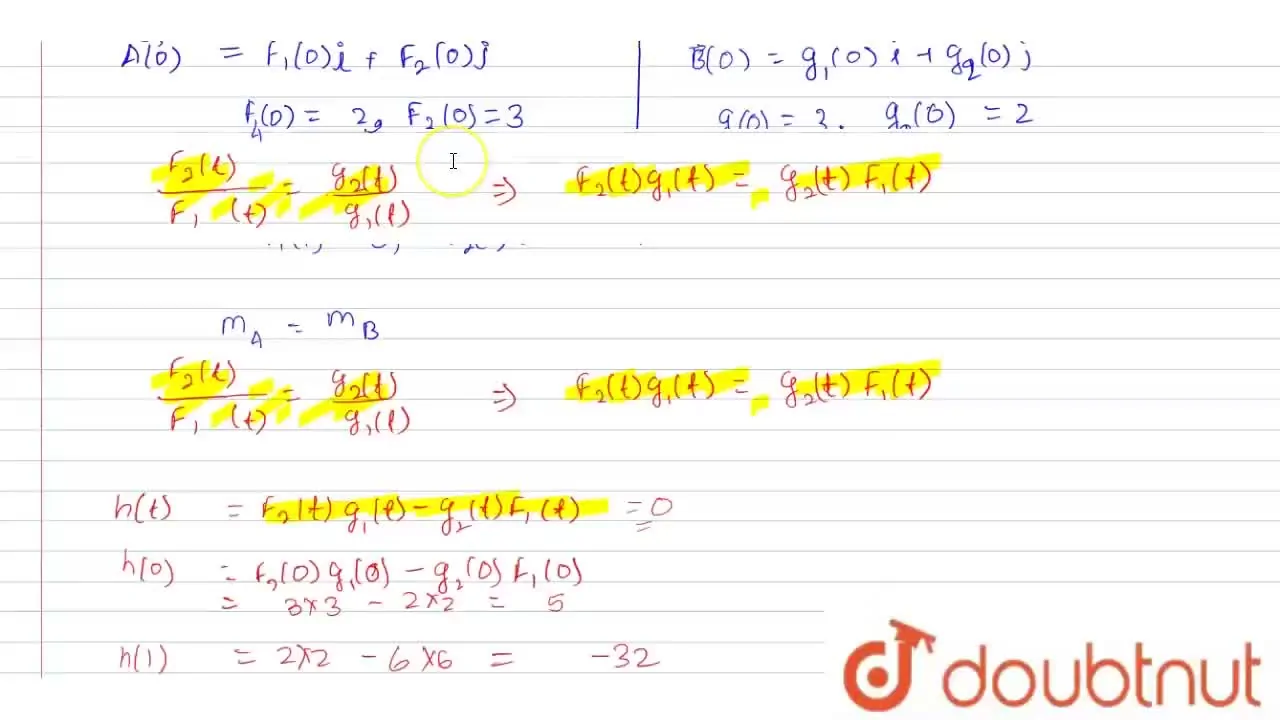Let are continuous functions. If are non-zero vectors for all Then,show that are parallel for some .
Video Solution
Text Solution
is parallel to for some if and only if for some
or for some
Let
Since h is a continuous function, and , there are some for which , i.e.,
are parallel vectors for this .
|
Updated on:21/07/2023
Related Playlists
- BOOK - CENGAGE ENGLISHCHAPTER - INTRODUCTION TO VECTORS EXERCISE - FILL IN THE BLANKS2videos
INTRODUCTION TO VECTORS
- BOOK - CENGAGE ENGLISHCHAPTER - INTRODUCTION TO VECTORS EXERCISE - TRUE OR FALSE1videos
INTRODUCTION TO VECTORS
- BOOK - CENGAGE ENGLISHCHAPTER - INTRODUCTION TO VECTORS EXERCISE - INTEGER TYPE8videos
INTRODUCTION TO VECTORS
- BOOK - CENGAGE ENGLISHCHAPTER - INTEGRALSEXERCISE - All Questions764videos
INTEGRALS
- BOOK - CENGAGE ENGLISHCHAPTER - INVERSE TRIGONOMETRIC FUNCTIONSEXERCISE - Archives (Numerical Value type)2videos
INVERSE TRIGONOMETRIC FUNCTIONS
Similar Questions
Find →a+→b if →a=ˆi−ˆj and →b=2ˆi
View Solutionlet →a=2ˆi+3ˆj and →b=ˆi+4ˆj then find projection of →a on →b
View Solutionif →a=2ˆi−3ˆj+ˆkand→b=ˆi+2ˆj−3ˆk then →aX→b is
View SolutionIf →F=ˆi+2ˆj+ˆkand→V=4ˆi−ˆj+7ˆk what is →F.→v ?
View SolutionFind →a.(→b×→c),if→a=2ˆi+ˆj+3ˆk,→b=ˆi+2ˆj+ˆk and c=3ˆi+ˆj+2ˆk.
View SolutionIf →a=ˆi−2ˆj+3ˆkand→b=2ˆi−3ˆj+5ˆk , then angle between →aand→b is
View SolutionFind ∣∣→a×→b∣∣, if →a=ˆi−7ˆj+7ˆkand →b=3ˆi−2ˆj+2ˆk
View SolutionFind (→a+3→b).(2→a−→b), If →a=ˆi+ˆj+2ˆk and →b=3ˆi+2ˆj−ˆk
View SolutionIf →a=ˆi+ˆj+ˆk, →b=2ˆi−ˆj+3ˆk and →c=ˆi−2ˆj+ˆk find a unit vector parallel to 2→a−→b+3→c
View SolutionIf →a=3ˆi−ˆj+2ˆk and →b=2ˆi+ˆj−ˆk then find(→a×→b)→a.
View Solution


